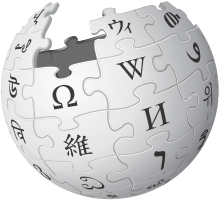
Wikipedia may be experiencing a bit of a coolness crisis. A case in point: you give a presentation at a conference and the central point to support your conclusion is a Wikipedia quote. Not cool. You’re hotly debating a certain topic at a party and insist on a certain argument because you “read it in a Wikipedia article.” Again, not cool.
But there are plenty of ways that Wikipedia is still cool, and that’s particularly true for translators. And unlike so many other things that I mention in this column, the value of Wikipedia is not just for translators of “large” languages. In fact, I’d be surprised if any of you reading this column are not represented by the almost 300 languages in which Wikipedia is currently available.
How is this helpful for translators?
First stop is the homepage. If you open www.wikipedia.org and scroll down to the bottom of that page, you can view all the languages that have more than 100 articles on Wikipedia. (To see all 285 languages, click on the Other Languages link at the very bottom of that page.) What’s that good for? Well, first of all it should make your heart swell with pride to be an active part of such a multilingual world. And – more practically – it’s a great way to check whether you can display all the different languages. For every language that is displayed with squares (□□□), you know that you’re missing a font that has those characters in its repertoire. For project managers this is a must. And that’s cool.
Second stop: terminology research. The many different language versions of Wikipedia are not translations of each other, and that’s an important aspect to the multicultural (self-) perception of Wikipedia. Articles are typically adjusted (and chosen) by volunteers to fit the target locale. Still, Wikipedia is a powerful tool for terminology research – especially when it comes to top-level terms. You all know that different language entries for that term are displayed on the left-hand side (or the right if you start out with a right-to-left language such as Arabic or Hebrew), making the correct translation possibly just a click away.
There are also tools that support a more in-depth comparison of different language versions so that you can quickly not only spot the top-level term but some of the terminology that surrounds it. Manypedia (www.manypedia.com) is a tool that searches Wikipedia for a specific term and then looks up the corresponding Wikipedia pages in other languages. It will then tell you the percentage of the similarity of the concepts and display the pages you request side-by-side.
Let’s try it step by step. In the pop-up bar on the top of Manypedia’s page you can enter a search term under “Search” and then select which language version you want to look at. The correct page will be displayed on the left-hand side of the screen. Under “Compare with the,” select which language version you want to compare it with; in the page that appears on the right side of the page, you can select “disable translation” to see the page in the original corresponding language. Again, very cool.
Meme Miner (www.fredrocha.net/MemeMiner/) is somewhat similar, but you leave more things up to the judgment of the computer. Just as with Manypedia, you can query Wikipedia for certain terms. Meme Miner’s underlying program then mines corresponding information from Wikipedia in another language that you have specified. It’s also a great tool, especially if you just want a quick idea for a term or phrase. Not hard to label: cool.
And third, there are tools that make the translation of Wikipedia pages easier. As professional translators we all get asked to donate our time for all kinds of things, so this might be helpful to know about. Again, different language versions of Wikipedia are not translations of each other, so ideally there are very few completely translated pages. But we might notice a subsection or paragraph missing, say, in the page about Warsaw in the Dutch Wikipedia, the same section that was done well in the Polish version. To aid you in the process of translating just that small snippet, Microsoft Research India has released WikiBhasha. You can use a machine-translated “gisted” version of that section as a starting point or start right from scratch. Once you are done you can submit right from within the tool to Wikipedia. Once again: cool. Very cool, indeed.
This article was originally published in The ATA Chronicle (April 2012), the monthly magazine of the American Translators Association (www.atanet.org).
Author bio









Thanks a lot for these great resources! I have a feeling that I’m going to use Manypedia a lot from now on! I believe Wikipedia is a great tool for us translators as long as we do some more research to corroborate the first results (you can never be too cautious when it comes to specific terminology!)
I expect the percentage of original articles vs translations varies by language. A quick look at the References section is helpful – it should contain a list of local, reputed sources rather than the same references as the English article.
Hey Catherine & Jost,
Really cool article. Here was my take on how to use Wikipedia+Google Results counter: http://blog.transbunko.com/translation-tips-google-results-counter/
Let me know what you think!
Thanks,
Anthony
Very interesting, thanks for sharing Anthony!
Sometimes I use Wikipedia to look up names of events, movies, etc, in case I have to write to non-English-speaking friends.
It’s also a good guide/reference tool for rarely used (or not translated anywhere else on the Web) toponyms around the world.
Hey, Catherine!
Thank you for publishing and sharing – as always – such interesting articles (as was to be expected by something authored by Jost). I have immediately bookmarked his suggested links and hope to be using them – a lot! I agree with him that Wikipedia has fallen into some disrepute, but not to me, I use it on an ongoing basis precisely to help me out with translation issues. So, in a nutshell, yes: cool!
Hi Nelida,
Thanks for your comment. I’m sure you can imagine how excited I was and still am about Jost agreeing to publish his post in our blog 🙂 As for Wikipedia, I’ve also used it extensively for translation projects; either for reference (to understand more what I’m translating) or as a direct dictionary (for a toponym project with thousands of placenames to translate) as I mentioned in my comment to Anthony. Very useful indeed!
Thanks, Nelida and all others for commenting and suggesting other ways to use Wikipedia.
Translators become familiar with your style, terminology and subject area. So, if you have a good one, stick with them and train them to your needs.